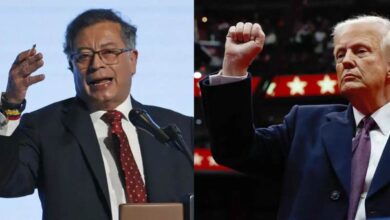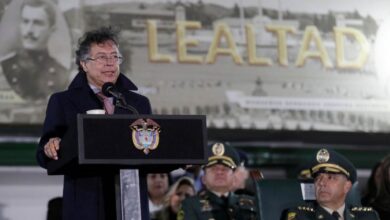What is New about this Pact Between the Colombian Government and the ELN Compared to Previous Ones?
The new ceasefire agreement between Gustavo Petro's government and the ELN has some elements that may augur well for its fate.

Photo: TW-petrogustavo
LatinAmerican Post | Santiago Gómez Hernández
Listen to this article
Leer en español: ¿Qué tiene de nuevo este pacto entre el Gobierno de Colombia y ELN de los anteriores?
A couple of days ago, the government of President Gustavo Petro announced a ceasefire pact with the ELN guerrillas. This news came amid some skepticism on both sides. This is not the first attempt to cease fire and start negotiations between the Colombian State and this guerrilla. Several previous governments and different presidents had tried to achieve significant progress with this guerrilla group without great results.
One of the most recent failed attempts was made when the government of former President Ivan Duque continued an exploratory dialogue with the armed group. However, Duque ordered to pull out of the conversation after an attack on the General Santander Cadet School in the Colombian capital as he found "no intention of peace."
You can also read: Gustavo Petro and Nayib Bukele, an Ideological Fight
Despite this, several features make this new attempt different from the others and generate more excitement than the rest.
A Robust Agreement
This bilateral ceasefire is the longest agreed between this guerrilla group and the Colombian State. It will last six months and will cover the entire Colombian territory. The agreement will be finalized by August 3, when the 180-day (extendable) cessation of hostilities will begin and be verified.
These achievements can be seen as the precise will of both parties. The ELN is characterized by only being able to reach partial or short-term agreements. This is linked to its structure in which each bloc has sufficient autonomy, and it isn't easy to coordinate ceasefires from the heads.
In addition to the achievable milestones of this agreement, there is also a different context that may augur a definitive pact. President Gustavo Petro himself estimates that the final cessation of hostilities could occur by early 2025.
A Different Government
This is the first agreement between a Colombian socialist guerrilla and an openly leftist government. President Gustavo Petro is the first ex-guerrilla (M-19) and openly leftist. His government seeks to promote a series of reforms that may be very much in line with changes that the guerrillas themselves would be interested in achieving.
Álvaro Villarraga Sarmiento, director of Memory Construction at the National Center for Historical Memory, told LatinAmerican Post that "each guerrilla insurgency follows its course in the search for peace with the respective national governments. It is their route in very peculiar current circumstances, with a progressive government of leftist tendencies, with social movements, indigenous sectors, women, Afro-descendants, environmentalists, and so forth."
Challenges to Overcome
Despite the signs of optimism that both parties can send with this agreement, there is a long road ahead to achieve a demobilization agreement. Villarraga explains three main challenges that the government, guerrillas, and civil society must overcome.
The first is the substantive agreements. "It is impossible to have an insipid peace agreement, without political and social reforms, with any insurgency in Colombia and the world," explains the expert. However, the government has a series of reforms that can align with the counterpart's demands, mainly in social equity, democracy, and the environment.
In addition, the official of the Historical Memory Center also warns of the protocols and guarantees of compliance with this ceasefire and a future pact. A passage from violence to political participation. Finally, the third significant challenge for both sectors will be the legitimacy of the rest of society. "Every peace process aspires to legitimacy. It calls and summons a great national consensus for peace. And this is also being done, rightly, from the government and ELN table", Villarraga assured.
No Extortion or Kidnapping
Although it was initially thought that the guerrilla and the government agreed on a cessation of hostilities, ruling out kidnapping and extortion as a method of guerrilla financing, these activities would be prohibited. The pro-government senator and government delegation member, Iván Cepeda, confirmed that these are part of the International Humanitarian Law, so they should be included.
"By framing the ceasefire agreement in International Humanitarian Law, it is clear that kidnapping and extortion constitute serious violations. This means that kidnapping will be subject to observation by the Monitoring and Verification Mechanism. When it occurs, it must be activated to seek immediate release," said the senator in the plenary session of Congress.
This, although Pablo Beltran, the ELN delegate at the talks, told the press that these two activities were not part of the agreement "for now." Beltran explained that these were the sources of income for the guerrillas, who, according to Cambio magazine, need $1 million a month to maintain their troops.
The future of this agreement not only depends on peace with the ELN, but it could also be vital in fulfilling Petro's long-awaited promise of "total peace. As the ELN is the leading armed guerrilla group in Colombia, the president will be able to move forward with an agreement with other groups, such as FARC dissidents, paramilitary groups, and drug trafficking cartels, among others that continue to prolong violence in the South American country.




